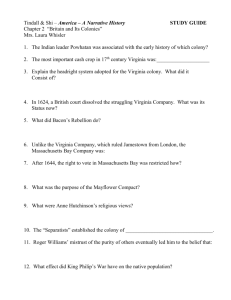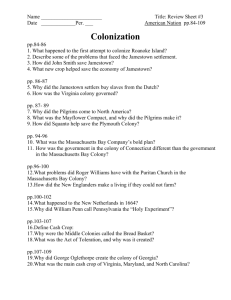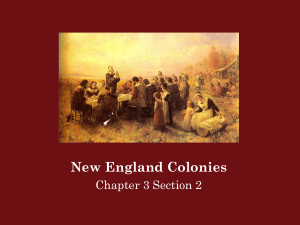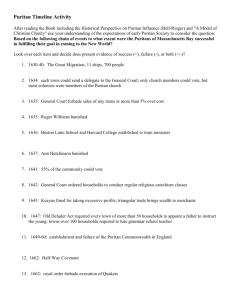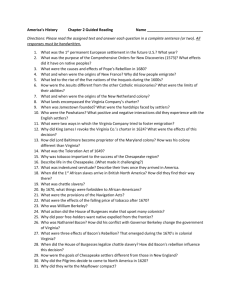Review questions
advertisement
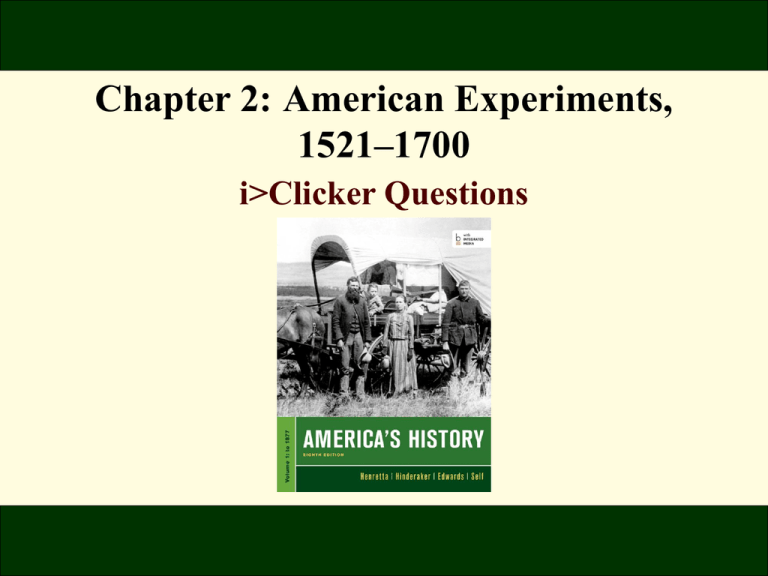
Chapter 2: American Experiments, 1521–1700 i>Clicker Questions 1. How did the Spanish colonizers manage to tap the enormous wealth of Mesoamerica and the Andes? a. By using the rulers of the Aztec, Mayan, and Inca empires as royal governors b. By embracing local religions and exploiting the credulity of natives c. By capitalizing on preexisting systems of tribute and labor discipline d. By recruiting skilled laborers from all over Europe 2. Why was the Columbian Exchange so important? a. It led England to become the dominant nation in Europe. b. It spread diseases from the New World to Europe, decimating the population throughout the continent. c. It stimulated the growth of population in Europe and Africa. d. It signaled the beginning of the transatlantic slave trade. 3. Why did Philip II send the Spanish Armada against England in 1588? a. He demanded the return of gold Sir Francis Drake had stolen in 1580. b. He wanted to avenge the English military campaign against Catholic Ireland. c. With his country in serious economic decline, he hoped to gain wealth in a war against mighty England. d. He wanted to restore Catholicism in England. 4. How did the colony of Virginia change when King James I assumed royal control in 1624? a. The House of Burgesses could ratify all legislation. b. Property owners were required to pay a tax to support the Church of England. c. The House of Burgesses was dissolved. d. The king began to imprison people who opposed his policies. 5. What crop became the economic mainstay of the West Indies colonies of England, France, and Holland starting in the 1640s? a. Tobacco b. Sugar c. Indigo d. Cotton 6. Why did the English mariner Henry Hudson travel up the river that now bears his name in 1609? a. He was looking for a colony far away from the Dutch settlements in New York. b. He was hoping to establish a colonial alternative to the Puritan settlements of New England. c. He was looking for new fur-trading opportunities with Native Americans. d. He was looking for a navigable route to Asia. 7. What advantage did the Five Nations of the Iroquois have in the seventeenth century? a. Their stable relations with their neighbors allowed them to avoid warfare. b. Their location in upstate New York allowed them to remain shielded from the influence of European newcomers. c. Their strategic location in central New York allowed them to dominate the region. d. Their location allowed them to only deal with one European power at a time. 8. How did the Puritan Massachusetts Bay Colony differ from the Pilgrim Plymouth Colony? a. The Massachusetts Bay Colony grew different crops. b. The Massachusetts Bay Colony followed Calvinism. c. The Massachusetts Bay Colony considered the Bible as their legal guide. d. The Massachusetts Bay Colony's society was based on gender hierarchies. 9. Which statement characterizes Metacom's War? a. Concluded in weeks b. Little impact on Puritan society c. Costly for both sides d. Resulting in the destruction of the Indian tribes 10. Why did Bacon's Rebellion occur? a. Escaped African American slaves banded together and led an insurrection against wealthy planters. b. Virginia colonists revolted over James I's decision to make Virginia a royal colony. c. Impoverished white freeholders and tenants who wanted land were opposed by wealthy planters. d. French attempts to dislodge English colonists from Virginia sparked unrest among lower-class whites. Answer Key 1. The answer is c. 2. The answer is c. 3. The answer is d. 4. The answer is b. 5. The answer is b. 6. The answer is d. 7. The answer is c. 8. The answer is c. 9. The answer is c. 10. The answer is c.
